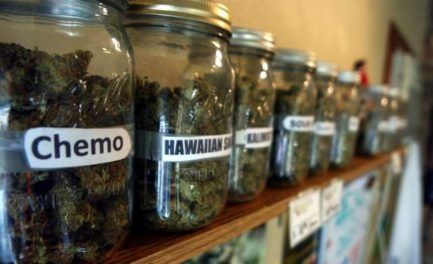Despite revenue incentive, most cities not embracing legal pot sales
by Chris Reed | July 20, 2018 4:31 pm
 Six-plus months into the beginning of California’s experiment with legal recreational marijuana, a review of Proposition 64’s effects shows a mixed and complicated record. Here’s a look at four broad categories:
Six-plus months into the beginning of California’s experiment with legal recreational marijuana, a review of Proposition 64’s effects shows a mixed and complicated record. Here’s a look at four broad categories:
Availability of legal pot stores: Even though local governments had nearly 14 months from when Proposition 64 was adopted in November 2016 and when it took effect this Jan. 1, local officials have been in no hurry to implement the law – either because of continuing disdain for recreational marijuana or sluggish bureaucracies.
The most recent Southern California News Group study[1], updated June 11, found that just 30 percent of cities (144 of 482) had permitted any recreational or medicinal marijuana sales and just 30 percent of counties (18 or 58) allowed such sales in their unincorporated areas.
The assumption that many budget-stressed cities would eagerly embrace recreational marijuana sales because of lucrative tax revenue – a source of funds not available with untaxed medicinal marijuana sales – has not been borne out. The Southern California News Group reports that fewer than one in seven cities have licensed recreational pot shops.
Marijuana supplies: Even in cities and counties which allow pot sales, availability of cannabis has reportedly been tight in many areas since July 1. That’s when provisions of state law went into effect requiring legal sellers to use new child-proof packaging and to test their products for the presence of mold and pesticides.
The Fox News team serving Sacramento and Central Valley TV markets reported[2] last week that several dispensaries in the region “have empty shelves and have had to turn away customers and lay off staff.” The pot shortages could last, Fox reported, because of another shortage: in state labs certified to test marijuana for purity and healthfulness.
Criminal justice: A report issued earlier this month by the state Attorney General’s Office showed the number of marijuana-related arrested in 2017 in California had plunged[3] 56 percent – going from about 14,000 in 2016 to a little more than 6,000.
Why didn’t the numbers drop even more? Because while possession of up to 1 ounce of marijuana is now legal, possession of larger amounts and growing cannabis is not. Selling pot without a license and using it in restricted areas or before driving remain crimes.
Elsewhere on the criminal justice front, Sacramento County District Attorney Anne Marie Schubert has won praise from social justice activists for using a provision in Proposition 64 to reduce or dismiss old marijuana convictions that are no longer classified as crimes under the measure’s weakened rules.
Sacramento Bee columnist Marcos Bretón has praised[4] Schubert – long seen as something of a strict[5] law-and-order conservative – for her policy.
The Bee reported that San Francisco and San Diego counties have similar efforts under way.
State pot tax revenue: In May, the nonpartisan Legislative Analyst’s Office reported total state tax revenue from the first quarter of the year was running more than 60 percent[6] below expectations.
But the LAO remains optimistic that revenue from cannabis will rebound.
As reported[7] by The Motley Fool website – which is keeping close tabs on the emerging legal marijuana industry as a possible lucrative investment niche – the LAO recently adjusted downward its forecast of how much the state would get from from its 15 percent excise tax on legal marijuana sales during fiscal 2018-19. But the reduction was only a modest 2 percent – going from $643 million to $630 million.
- study: https://www.ocregister.com/2018/04/09/database-of-marijuana-rules-from-every-city-and-county-in-california-shows-slow-acceptance-of-prop-64/
- reported: https://fox40.com/2018/07/09/new-regulations-mean-empty-shelves-at-californias-marijuana-dispensaries/
- plunged: https://www.ocregister.com/2018/07/10/prop-64-didnt-legalize-every-cannabis-crime-but-arrests-are-falling-fast/
- praised: https://www.sacbee.com/news/local/news-columns-blogs/marcos-breton/article213696139.html
- strict: https://www.sacbee.com/news/politics-government/capitol-alert/article208163744.html
- more than 60 percent: http://www.governing.com/topics/finance/tns-california-marijuana-taxes-fall-far-short-of-projections.html
- reported: https://www.fool.com/investing/2018/05/19/california-just-reduced-its-marijuana-tax-revenue.aspx
Source URL: https://calwatchdog.com/2018/07/20/despite-revenue-incentive-most-cities-not-embracing-legal-pot-sales/